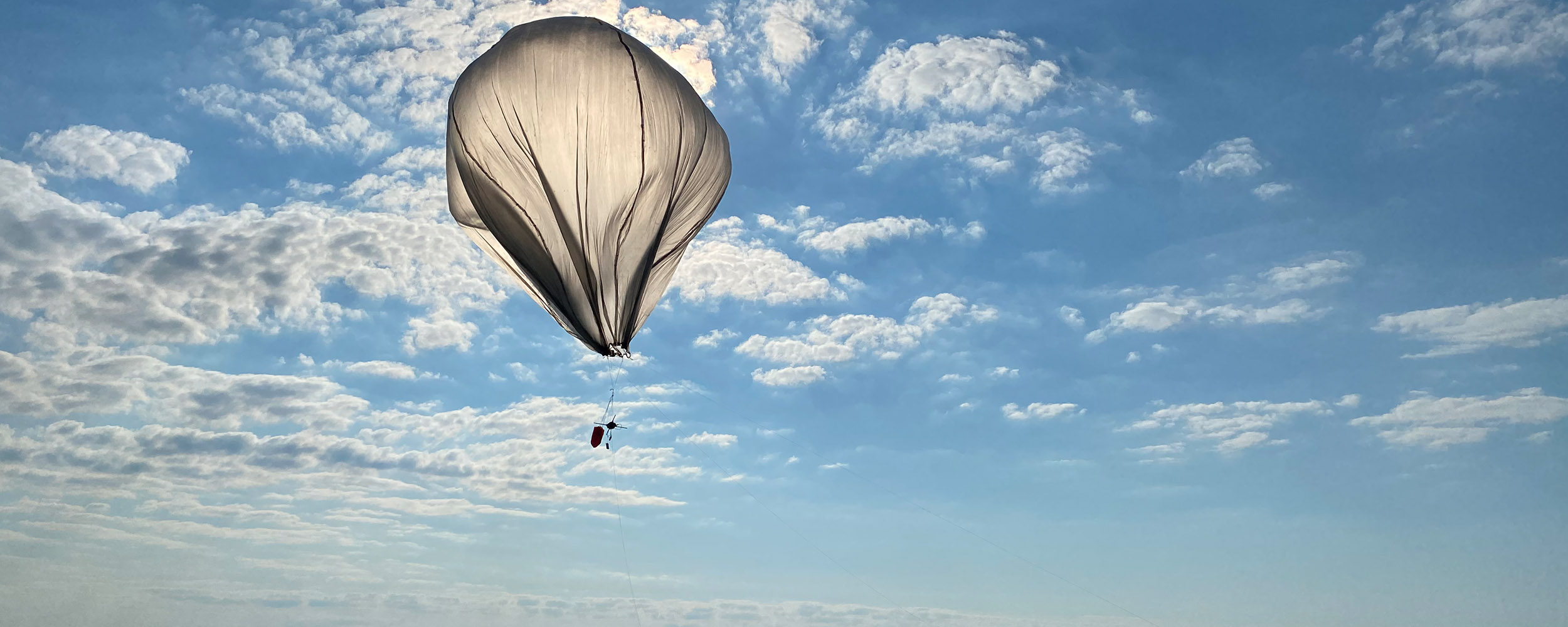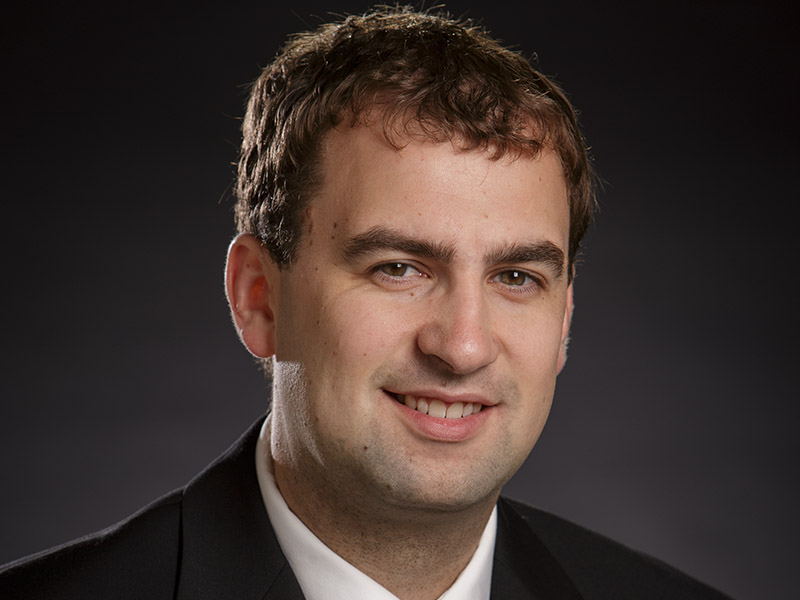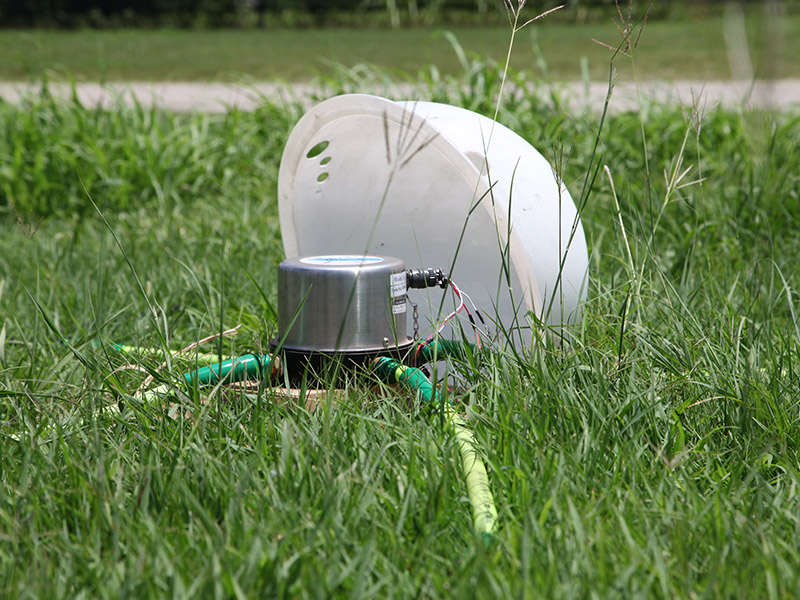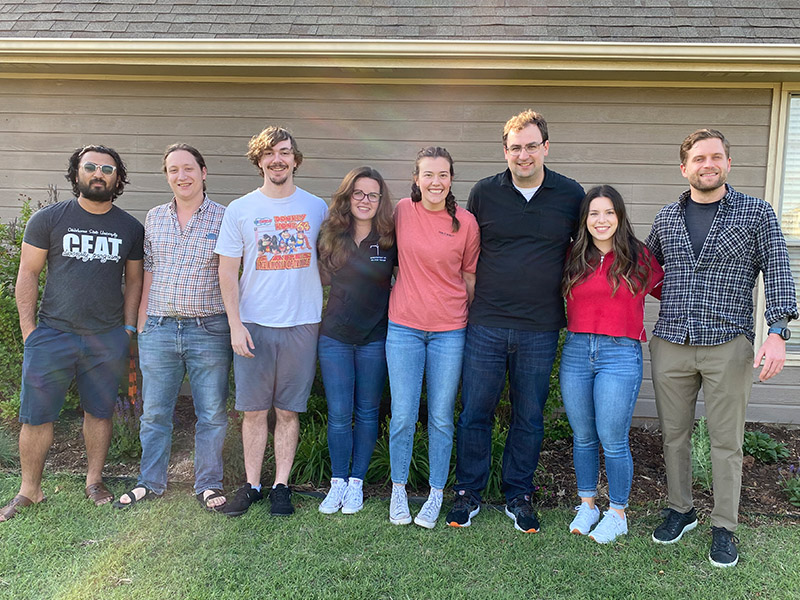
Elbing receives Experimental Physics Investigator award for continued research on infrasound signatures of tornadoes
Thursday, October 27, 2022
Media Contact: Kristi Wheeler | Manager, CEAT Marketing and Communications | 405-744-5831 | kristi.wheeler@okstate.edu
Dr. Brian Elbing, associate professor of mechanical and aerospace engineering, recently received the 2022 Experimental Physics Investigator award from the Gordon and Betty Moore Foundation. It is a five-year award totaling $1.25 million. Elbing was one of only 16 who received the award across the United States.
The Gordon and Betty Moore Foundation awarded grants to support these 16 experimental physicists to advance the scientific frontier. Some of the open research questions that will be explored include quantized vortex lines in superfluid liquid helium, optical properties of nanostructures and quantum computer memories. These awards provide an opportunity for outstanding scientists to pursue transformative research directly following attainment of tenure, a critical time in their careers. This funding allows physicists, during some of their most creative years, to concentrate on their research and build collaborative relationships that enable innovative discoveries.

Elbing’s research focuses on infrasound — sound at frequencies below human hearing — signatures of tornadoes. This work is largely motivated by the fact that most tornado related deaths occur in the southeastern U.S in spite of Tornado Alley having the largest tornadoes. This is due, in part, to hilly terrain because warnings rely heavily on radar, a line-of-sight measurement. Infrasound provides an alternative method because tornadoes emit infrasound and it has been shown to carry information about a tornado and its formation. In addition, infrasound can travel over long distances with minimal dependence on terrain. However, to use this data the fluid mechanism(s) must be determined, which Elbing’s previous research has identified four mechanisms that likely play a role.
“The primary question we have been focused on answering is what inside of a tornado makes these sounds,” Elbing said. “We’ve been studying that for several years starting with the NSF CLOUD-MAP project and continuing more recently through two National Oceanic and Atmospheric Administration (NOAA) grants. This work led us to identify several potential mechanisms, but a central concept was the importance of a phase change within the tornado that can amplify the sounds with the released energy.”

For the current project, Elbing proposed a new working model that combines these mechanisms with fundamentals of turbulence. In short, infrasound from the turbulence within the tornado is amplified due to an effect associated with the condensing of water in the air. The condensing is greater than the surrounding storm system due to the rapid change in air speed within the tornado creating an excessively low tornado core pressure. This would result in an amplifying of the sounds at frequencies proportional to the size of the tornado, which these predictions are consistent with all observations of sounds from tornado producing storms.
“This project will test the model validity with lab experiments of sound production from vortices within a psychrometric chamber to control thermodynamic conditions,” Elbing said. “The relationship between the phase change and the amplifying of the sound has only been proposed analytically, this project will provide the first experimental tests of this theory. Exploring this will produce fundamental relationships between a vortex, its thermodynamic properties, and the sounds it produces.
“These results will be combined with field testing using grounds sensors as well as sensors deployed with storm chasers and on high-altitude balloons because we are unable to fully replicate tornado physics in a lab. Currently, tornado infrasound does not have much footing in the weather warning community because there are more questions than answers. This project will advance the field by answering fundamental questions required to have meaningful discussions with operational meteorologists."
Elbing currently has five graduate students working with him on this project including Trevor Wilson, a mechanical and aerospace engineering doctoral candidate.

"Infrasound, or sound below the human threshold of hearing (20 Hz), can provide insights into many natural and manmade events,” Wilson said. “Examples of signals detected at our infrasound array at OSU include explosions, meteors, earthquakes, severe weather and tornadoes. A current gap of knowledge that exists is the exact fluid mechanism that produces some of these acoustic signals. Laboratory experiments targeting these mechanisms will be extremely helpful in developing a further understanding of why these signals exist and how they can be used to better understand their sources. For example, a better understanding of how and why tornadoes produce infrasound can allow for better detections of potential tornado forming weather, further understanding of tornado physics, and more optimal sensor placement for monitoring these signals."
Wilson said grants, like the Moore Foundation award, mean a lot to students as they can provide consistent support for their research. They provide them with the tools/instrumentation that is needed for the research as well as providing valuable financial support to the students.
“With this grant being a multi-year project, it is also very impactful to current and prospective members of Dr. Elbing’s team, as it can provide stable support and also room to advance into further degrees,” Wilson said. “Dr. Elbing has always gone out of his way to find funding for his students and that is a testament to why I have worked in his lab for the last six years.”
Elbing said it was a great honor to be selected for the award.
“Gordon Moore’s contribution to science and technology has shaped so much of our current society, which continues with him and his wife through their foundation," he said. "Consequently, I feel both an honor and a weight to use the opportunity they are giving me to make a meaningful impact on society.”
“The breadth and scientific audacity of experiments proposed by these individuals is stunning and inspiring,” said Theodore Hodapp, program director in the Experimental Physics Investigators Initiative. “Stunning as well, is the creativity and capabilities of these scientists."
The foundation will also support the work of this and future cohorts by providing equipment grants and by hosting gatherings to share new ideas and encourage collaborations. Central to this initiative is supporting the investigators as they strive to make their research groups inclusive and advance equity in their departments.
Catherine Mader, program officer in the Experimental Physics Investigators Initiative, described the foundation’s alignment this way: “It’s critical to support not just those who have had opportunities and resources to excel, but to support adoption of practices that will expand access to these opportunities in the future. Helping these researchers find resources and adopt practices to enhance equity and inclusion is an important way the foundation can help all group members produce their best science.”
Each of these investigators is pushing the boundaries of what is known and what is possible. While they expect some amazing — and perhaps unexpected — outcomes, they also know there will be dead ends and difficulties.
As a scientific advisor said to the foundation team as the initiative was being developed, “this is an opportunity to allow creative individuals to tackle the problem they were born to work on.”
With this new funding stream, the investigators will have the opportunity to learn if the problem they yearn to tackle can be solved.
A full list of recipients can be found by visiting https://www.moore.org/initiative-additional-info?initiativeId=moore-investigators-in-experimental-physics-initiativeLearn more about the Betty and Gordon Moore Foundation
